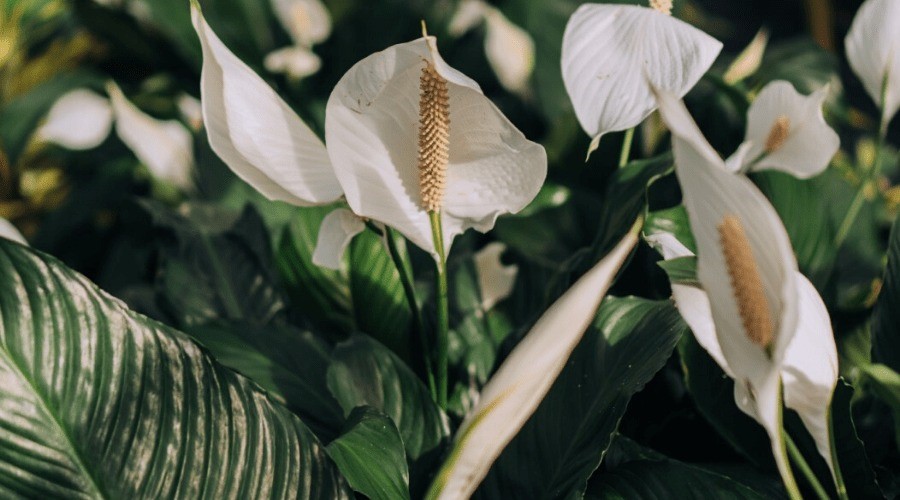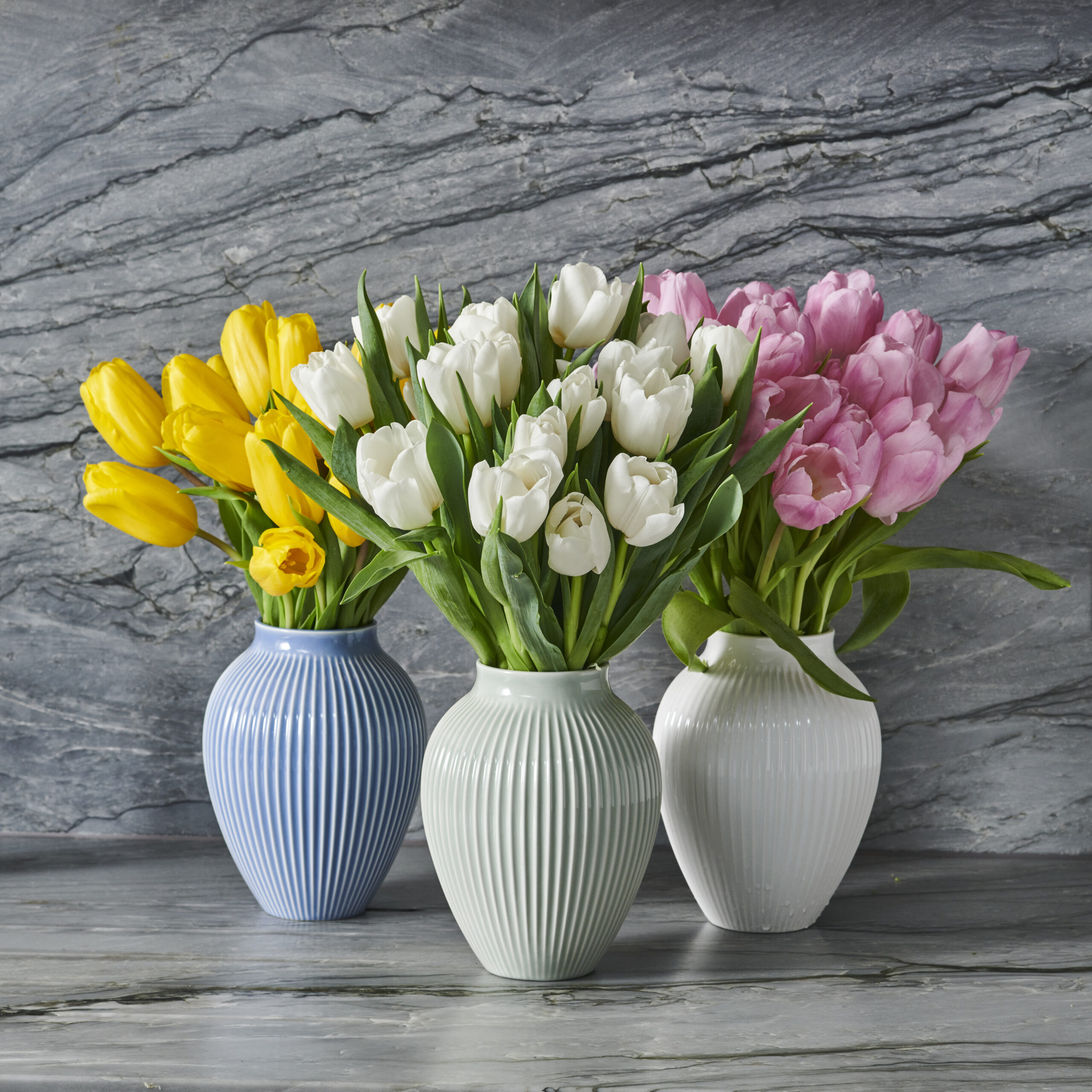Did you know that you can make a calm home décor inspired by peaceful plants? Some plants can spread peace all over the air, and one of these plants is a “Peace lily.”

Peace lilies, also known as “Spathiphyllum” is an extraordinary flower plant from the Araceae family. It’s based in South America and southeast Asia, and more popular as an indoor plant.
Spathiphyllum meaning
The name comes from the way Spathiphyllum look. “Spathi” equals the meaning of spathe or spade, which is how the flower is shaped, and the word “phyllum” equals the meaning of leaf.

What does Peace Lily symbolize?
The color white in peace lily spathes symbolize peace, innocence, calmness, healing, longevity, sympathy, hope and purity. That is why it is a suitable plant for your house or work environment, and a good flower gift too!

Peace Lily as a houseplant
Peace lilies are recommended to be one of the best indoors houseplants. It is not just how peaceful and attractive peace lilies look, but it has many other mental and physical benefits.

Peace Lily benefits
- Peace lilies are minimal maintenance plants, which will not exhaust you in the caring and growing tasks.
- Peace lily variegated leaves shine bright with the dark green color, which gives peace and calmness to the area.

- Peace lilies are a lovely friend to renew and refresh your home air.
- According to NASA clean air study in 1989, Spathiphyllum has been categorized as an effective plant in cleaning the air from gaseous elements, like benzene and formaldehyde.
- Peace lilies are perfect for feng shui practices. Feng shui is a traditional Chinese practice which aims to make peaceful harmony in the environment you live in by choosing the right location of things.
Are Peace Lilies toxic?
Even though peace lilies are named like this due to their “peaceful vibes” but here is something you need to put into consideration, that peace lilies are naturally “toxic.”

You do not have to worry! Because peace lilies are not from the highly toxic “Liliaceae” family, peace lilies are only mildly toxic to humans, cats, and dogs if they swallowed or ate it as Peace lilies include calcium oxalate crystals, which can cause skin irritation, hard swallowing and burning sensation inside the mouth.
So, if you have dogs or cats, or even kids, then make sure these little creatures do not swallow a bite from the peace!
Peace lily care guide

Taking the decision to have peace lilies is absolutely a great step toward peace and healing. And do not worry about the caring guide because it is simply too simple.
- Peace lily watering
Peace lilies are not enthusiastic fan of water, they can stay moisturized and humid for a long time, but make sure to check on the soil’s humidity from time to time during the week.
Peace lilies will not leave you confused when it comes to watering them. If you noticed drooping leaves and they do not seem “shiny and glowing” feel the soil with your fingers, if it is dry, then it is watering time, but remember, not too much.

- Humidity
Yes, peace lilies love to feel moist, a simple trick like surrounding peace lily with humid tray of gravel will make a peace lily happy + a good decoration too.
- Lighting and Sun
Peace lilies are “mid” in everything, even lightning. The good lightning rule for a peace lily is “not too much but not nothing at all.”
Keep peace lilies in low lightning areas, like facing the east or north of house windows, and try as much as you can to avoid direct sun light areas, like south locations. 6-8 hours of light per day is enough for peace lilies.

- Fertilizing
Choose a well-draining soil that dries out slowly and keeps moisture for a longer time, like all-purpose soil. You do not need to bother yourself with the fertilizing process, as the only times you can feed a peace lily with soil are during blooming seasons, which are spring and summer, or you can do a checkup every 6 weeks (about 1 and a half months).

- Dividing, and repotting
Peace lilies leaves may grow to 65 cm (about 2.13 ft) long with 25 cm (about 9.84 in) width, and a flower can be 30 cm (about 11.81 in) long, so, you will need to make some repotting tactics.

- When choosing a new pot, choose it to be 2-5 inches larger than the previous pot.
- It is best to repot peace lilies in spring, as it is the time of blooming and flourishing.
- Peace lilies grow from the deep roots, so when you do the dividing process, cut them into small plants, making sure you leave some clumps in every flower. Use a tough sharp tool, and plant them in separate pots.
- Cleaning your peace lily
Peace lilies are known for their long and big leaves. Placing peace lilies by the window means they will attract dust easily. Clean your peace lilies with a soft wet towel from time to time to avoid peace lilies brown tips and serious diseases.
What diseases can peace lilies face?

Although the treatment process of a peace lily is easy and simple, it may get sick with several diseases that may lead to a dead end. Here are top diseases that may face a peace lily and how to avoid them:
| Disease name | Causes | Symptoms | Solution | How to avoid |
| Cylindrocladium | Overwatering or over drained | Peace lily yellow leaves Peace lily brown tips Discoloration | Get rid of the plant and the pot. | Follow the proper watering and lightning rules. |
| Dasheen Mosaic Virus | Insects (ex. Aphids) Infected potting soil Infected gardening tools | Mosaic yellow and light green patterns on the leaves Discoloration | Get rid of the plant because it may affect other houseplants. | Use well- cleaned gardening tools and clean your plants consistently. |
| Leaf blight | High moisture leaves and over humidity | Leaf margins Dangerous brown and black dead spots | If it is in the early stage, repot your plant into a sterilized pot and cut the damaged parts. | Balance watering and humidity levels. |
How to care for peace lilies over the year seasons ?

A peace lily can live from 2-5 years, and to take care of peace lilies in the long term, you need to know a few notes for each season’s treatment.
Winter treatment
Keep it away from the cold and try to place it in warm places above 60°F (16°C). The best temperature for a peace lily is 70°F (21°C).
Avoid changing soil in the beginning of winter and delay it till spring.
Spring treatment
Repot your plants
Change soil or make new fertilization

Summer treatment
Keep them away from direct sunlight.
Peace lily watering should be in a balanced way. Summer does not mean they need more water; they are already drought tolerant.
Fall treatment
Keep them away from dusty and windy windows.
Keep the humidity balanced.
Clean them from time to time.

Are Peace Lilies a good gift?
Peace lilies symbolize peace, happiness, and healing; they are good looking in all house places and known with simple caring guide. Peace lilies can be an extraordinary gift for many personalities and various occasions.

Interested to know more about flowers and peace lilies? You can see some extraordinary flowers here.






